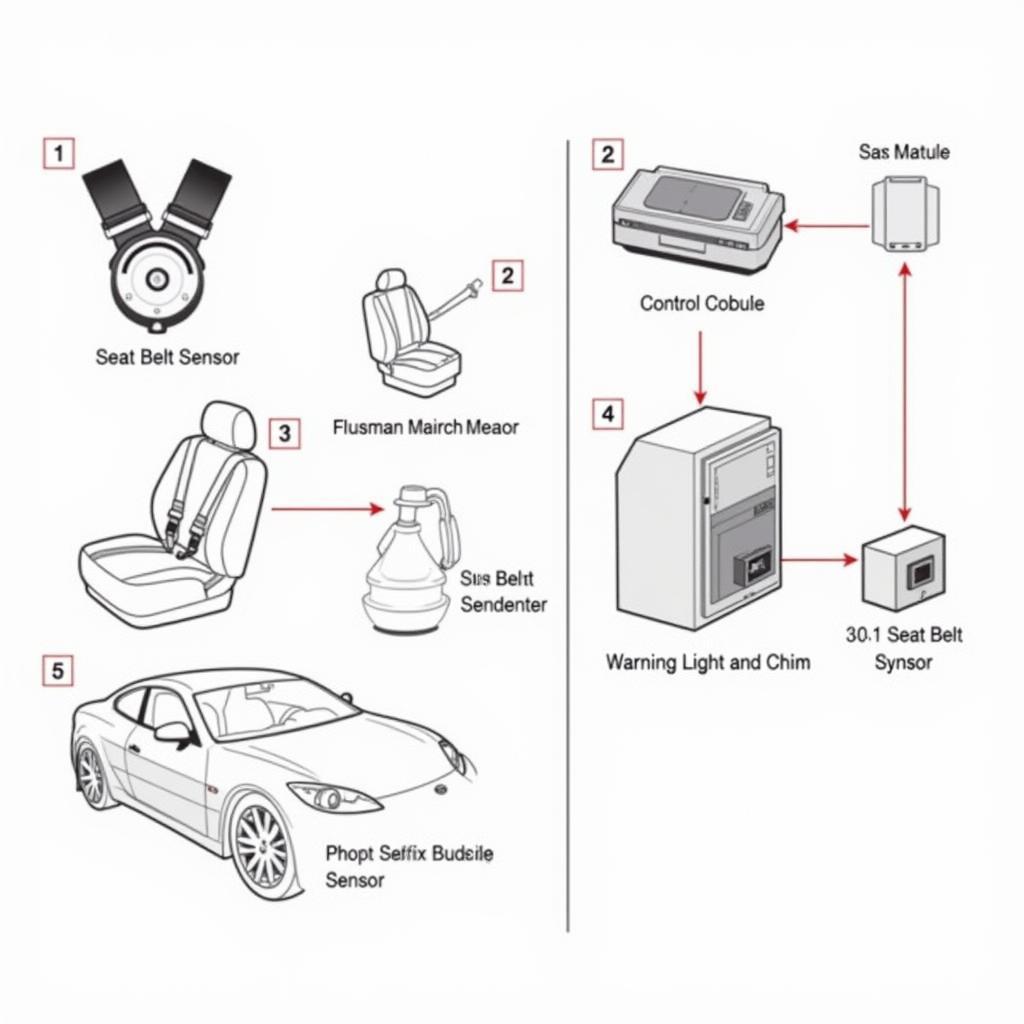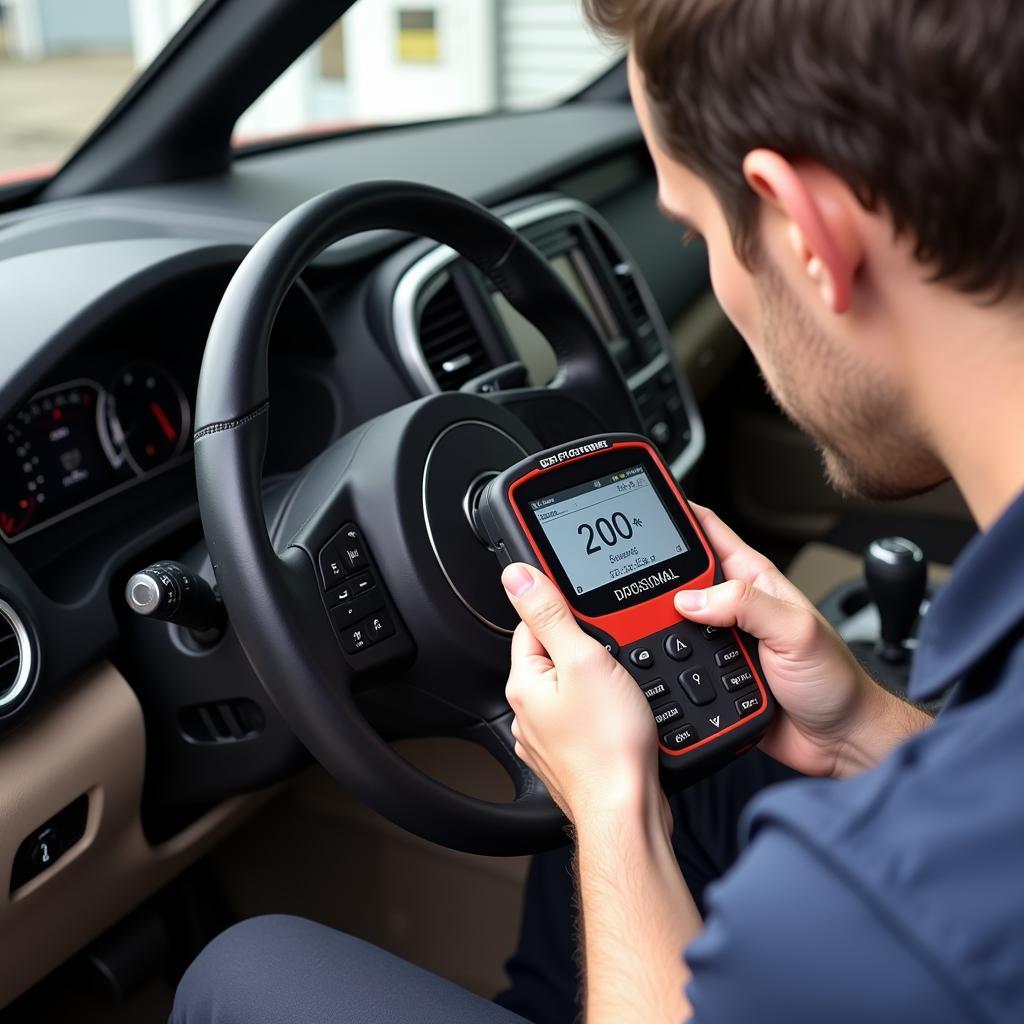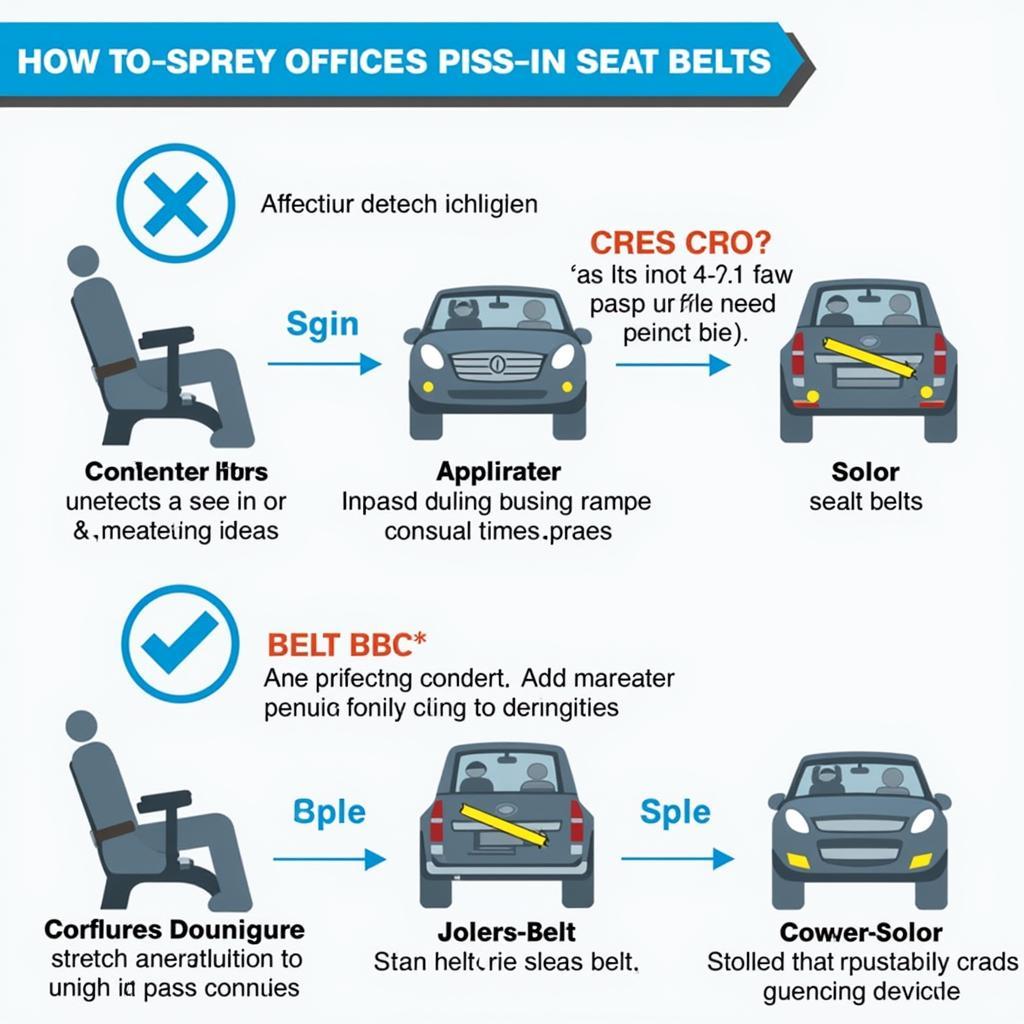The seat belt warning system, a critical safety feature in modern vehicles, is designed to encourage seat belt use and reduce the risk of injuries in an accident. This system utilizes sensors and indicators to alert drivers and passengers to fasten their seat belts. This article explores the intricacies of seat belt warning systems, common issues, and troubleshooting tips.
How Seat Belt Warning Systems Work
 Seat Belt Warning System Components
Seat Belt Warning System Components
At its core, the seat belt warning system consists of sensors, a control module, and warning mechanisms. Here’s a breakdown:
- Seat Belt Buckle Sensor: Located in the seat belt buckle, this sensor detects whether the buckle is fastened. When the buckle is secured, the sensor sends a signal to the control module.
- Control Module: The control module acts as the brain of the system. It receives signals from the buckle sensors and determines if a warning is necessary.
- Warning Mechanisms: These typically include a visual warning (a dashboard light) and an audible warning (a chime). Some systems may also include a voice alert or a combination of these.
Common Seat Belt Warning System Problems
While generally reliable, seat belt warning systems can encounter issues. Some common problems include:
- Malfunctioning Sensors: A faulty buckle sensor can trigger false warnings or fail to detect a fastened seat belt.
- Wiring Issues: Damaged or corroded wiring between the sensors and the control module can disrupt communication, leading to system malfunctions.
- Control Module Problems: A faulty control module can misinterpret sensor signals or fail to activate the warning mechanisms.
- Software Glitches: Modern vehicles rely heavily on software, and glitches in the seat belt warning system’s software can cause unexpected behavior.
Troubleshooting Seat Belt Warning System Issues
 Diagnosing Seat Belt Warning System Issues
Diagnosing Seat Belt Warning System Issues
Troubleshooting a seat belt warning system often requires specialized knowledge and tools. However, here are some preliminary steps you can take:
- Check the Basics: Ensure the seat belt is properly fastened and that there are no objects obstructing the buckle.
- Inspect the Wiring: Visually examine the wiring harness leading to the seat belt buckle for any signs of damage or corrosion.
- Consult Diagnostic Codes: If the warning light remains on, it may trigger a diagnostic trouble code (DTC) stored in the vehicle’s computer. These codes can provide valuable clues about the issue.
“When diagnosing seat belt warning system issues, it’s essential to check for stored diagnostic codes. These codes act like a vehicle’s internal language, pinpointing specific areas for further inspection,” says automotive electronics expert, David Miller.
Advanced Diagnostics and Repair
Resolving complex seat belt warning system issues typically involves:
- Using a Diagnostic Scanner: A professional-grade diagnostic scanner allows access to the vehicle’s computer system, enabling technicians to read DTCs, monitor live data streams, and perform advanced tests.
- Testing Components: Based on the diagnostic results, technicians can test individual components like sensors, wiring, and the control module.
- Software Updates or Reprogramming: In some cases, a software update or reprogramming of the control module may be necessary to rectify the issue.
Importance of a Functioning Seat Belt Warning System
 The Importance of Seat Belts in Vehicle Safety
The Importance of Seat Belts in Vehicle Safety
A functioning seat belt warning system is paramount for safety. It serves as a constant reminder to buckle up, significantly reducing the risk of severe injuries or fatalities in an accident.
“Remember, a properly functioning seat belt warning system isn’t just about avoiding fines, it’s about safeguarding lives,” emphasizes Sarah Thompson, a certified automotive safety expert.
Conclusion
The seat belt warning system is an integral part of vehicle safety, reminding occupants to buckle up and potentially saving lives. Understanding how this system works, common problems, and troubleshooting steps can be helpful for vehicle owners. However, seeking professional assistance is crucial for accurate diagnosis and repair of complex issues. Maintaining a functional seat belt warning system is essential for ensuring your safety and that of your passengers.
FAQs
1. Can I disable the seat belt warning system in my car?
While technically possible in some vehicles, disabling safety features like the seat belt warning system is highly discouraged. It can compromise your safety and may be illegal in certain jurisdictions.
2. Why does the seat belt warning light stay on even when I’m buckled up?
This could be due to a faulty buckle sensor, wiring problems, or a malfunctioning control module. Using a diagnostic scanner can help identify the root cause.
3. Can I fix a seat belt warning system problem myself?
While simple checks like inspecting the wiring are possible, it’s recommended to seek professional help for diagnosis and repair, especially if it involves electronic components.
4. How often should I have my seat belt warning system checked?
It’s a good practice to have your entire vehicle, including safety systems, inspected by a qualified mechanic at least once a year or as recommended in your owner’s manual.
5. What should I do if the seat belt warning chime is too loud or annoying?
Consult your owner’s manual or contact your vehicle manufacturer or a qualified mechanic. Some vehicles allow adjustments to the chime volume or tone.
